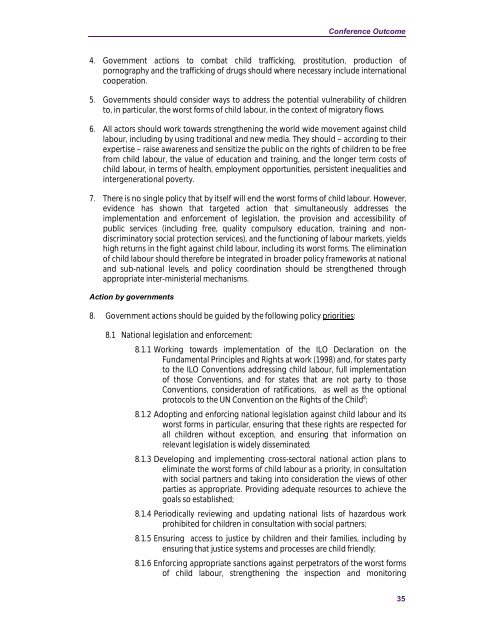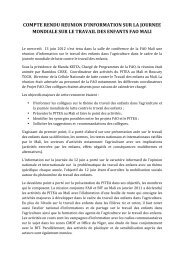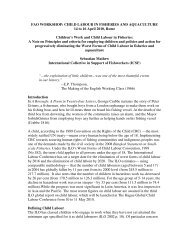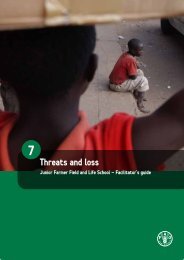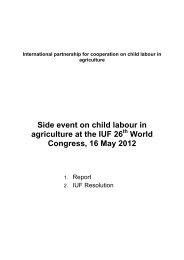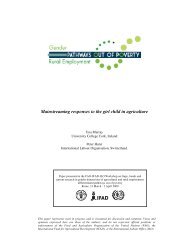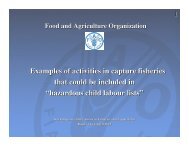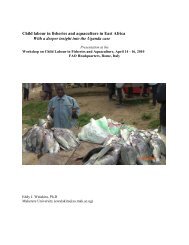The Hague Global Child Labour Conference 2010 - Food ...
The Hague Global Child Labour Conference 2010 - Food ...
The Hague Global Child Labour Conference 2010 - Food ...
You also want an ePaper? Increase the reach of your titles
YUMPU automatically turns print PDFs into web optimized ePapers that Google loves.
<strong>Conference</strong> Outcome4. Government actions to combat child trafficking, prostitution, production ofpornography and the trafficking of drugs should where necessary include internationalcooperation.5. Governments should consider ways to address the potential vulnerability of childrento, in particular, the worst forms of child labour, in the context of migratory flows.6. All actors should work towards strengthening the world wide movement against childlabour, including by using traditional and new media. <strong>The</strong>y should – according to theirexpertise – raise awareness and sensitize the public on the rights of children to be freefrom child labour, the value of education and training, and the longer term costs ofchild labour, in terms of health, employment opportunities, persistent inequalities andintergenerational poverty.7. <strong>The</strong>re is no single policy that by itself will end the worst forms of child labour. However,evidence has shown that targeted action that simultaneously addresses theimplementation and enforcement of legislation, the provision and accessibility ofpublic services (including free, quality compulsory education, training and nondiscriminatorysocial protection services), and the functioning of labour markets, yieldshigh returns in the fight against child labour, including its worst forms. <strong>The</strong> eliminationof child labour should therefore be integrated in broader policy frameworks at nationaland sub-national levels, and policy coordination should be strengthened throughappropriate inter-ministerial mechanisms.Action by governments8. Government actions should be guided by the following policy priorities:8.1 National legislation and enforcement:8.1.1 Working towards implementation of the ILO Declaration on theFundamental Principles and Rights at work (1998) and, for states partyto the ILO Conventions addressing child labour, full implementationof those Conventions, and for states that are not party to thoseConventions, consideration of ratifications, as well as the optionalprotocols to the UN Convention on the Rights of the <strong>Child</strong> 8 ;8.1.2 Adopting and enforcing national legislation against child labour and itsworst forms in particular, ensuring that these rights are respected forall children without exception, and ensuring that information onrelevant legislation is widely disseminated;8.1.3 Developing and implementing cross-sectoral national action plans toeliminate the worst forms of child labour as a priority, in consultationwith social partners and taking into consideration the views of otherparties as appropriate. Providing adequate resources to achieve thegoals so established;8.1.4 Periodically reviewing and updating national lists of hazardous workprohibited for children in consultation with social partners;8.1.5 Ensuring access to justice by children and their families, including byensuring that justice systems and processes are child friendly;8.1.6 Enforcing appropriate sanctions against perpetrators of the worst formsof child labour, strengthening the inspection and monitoring35


